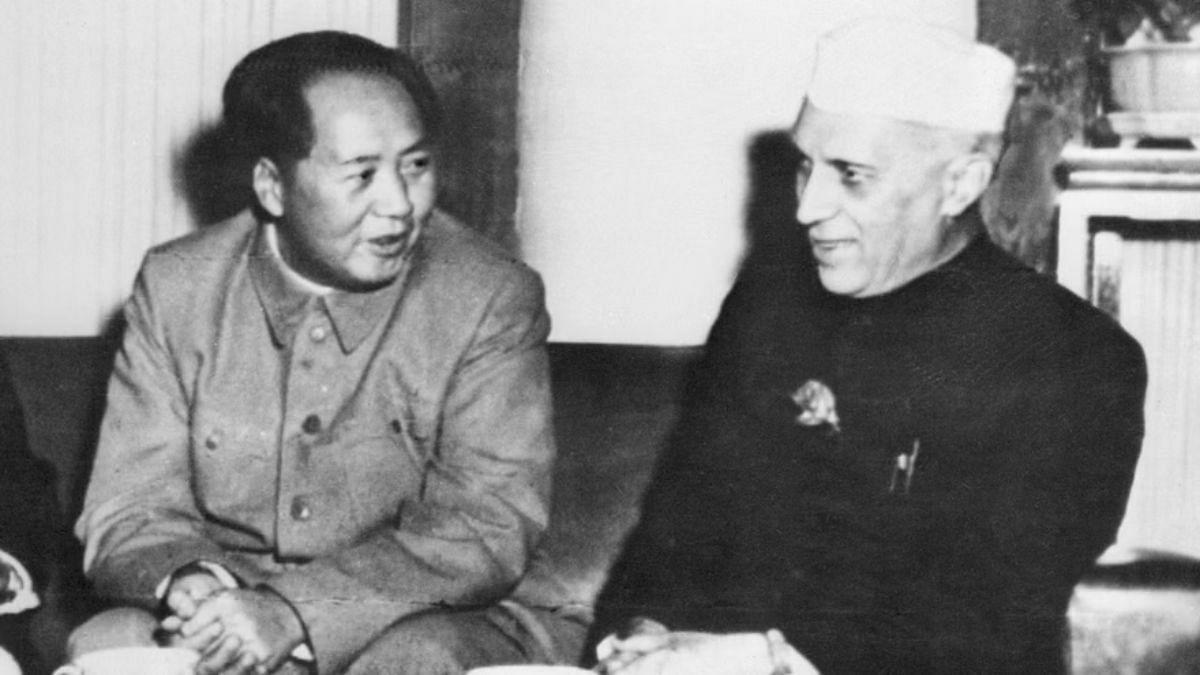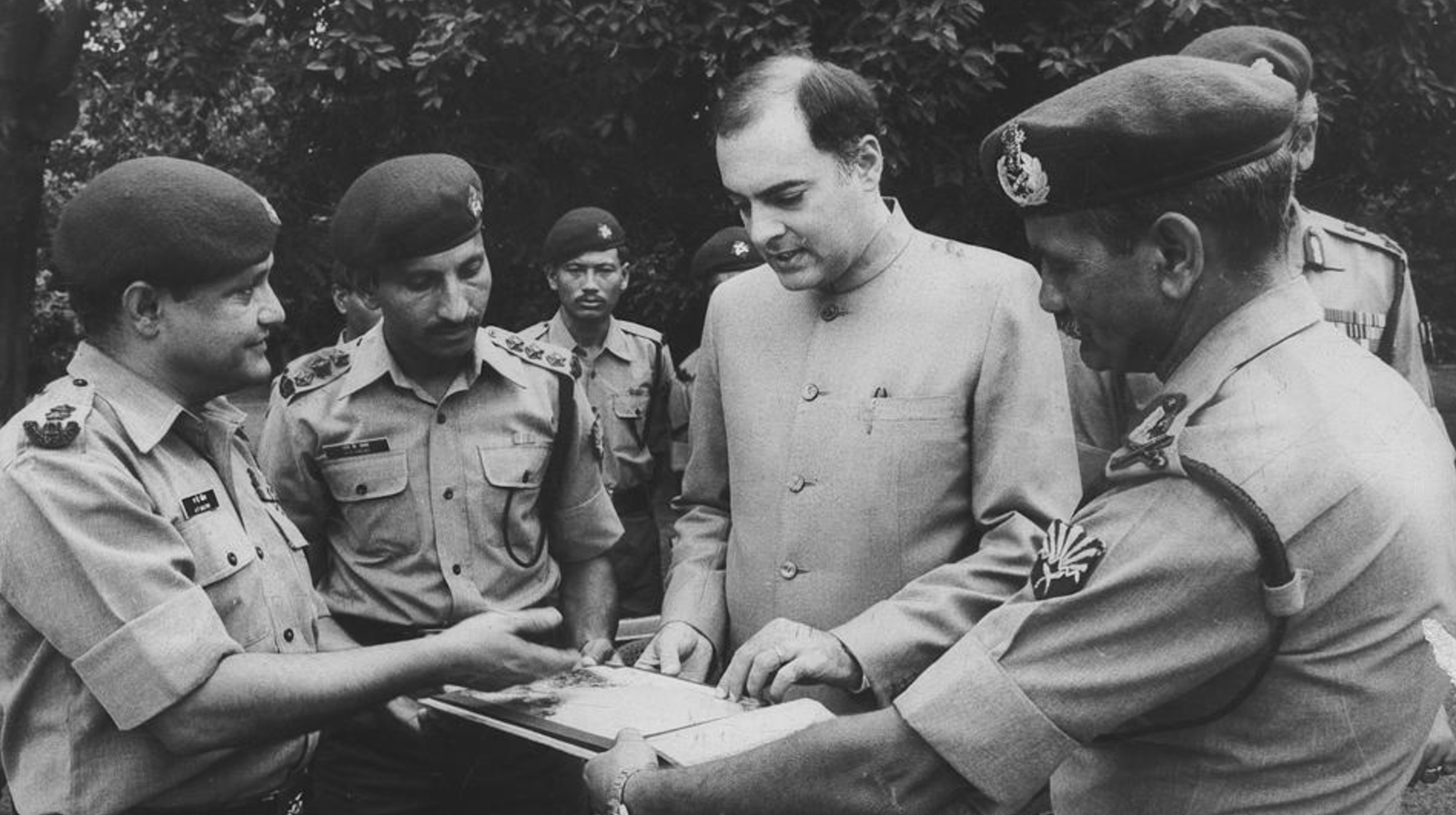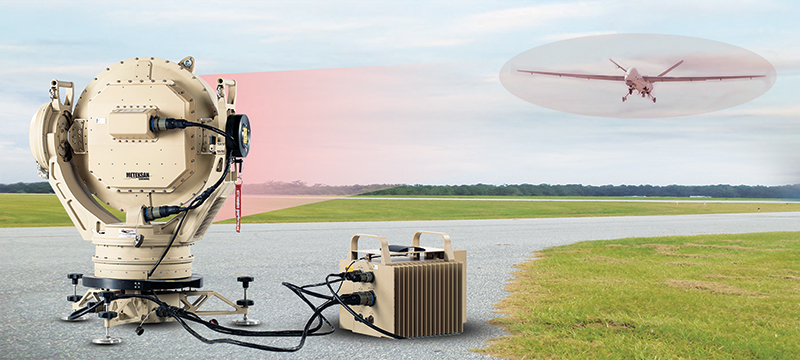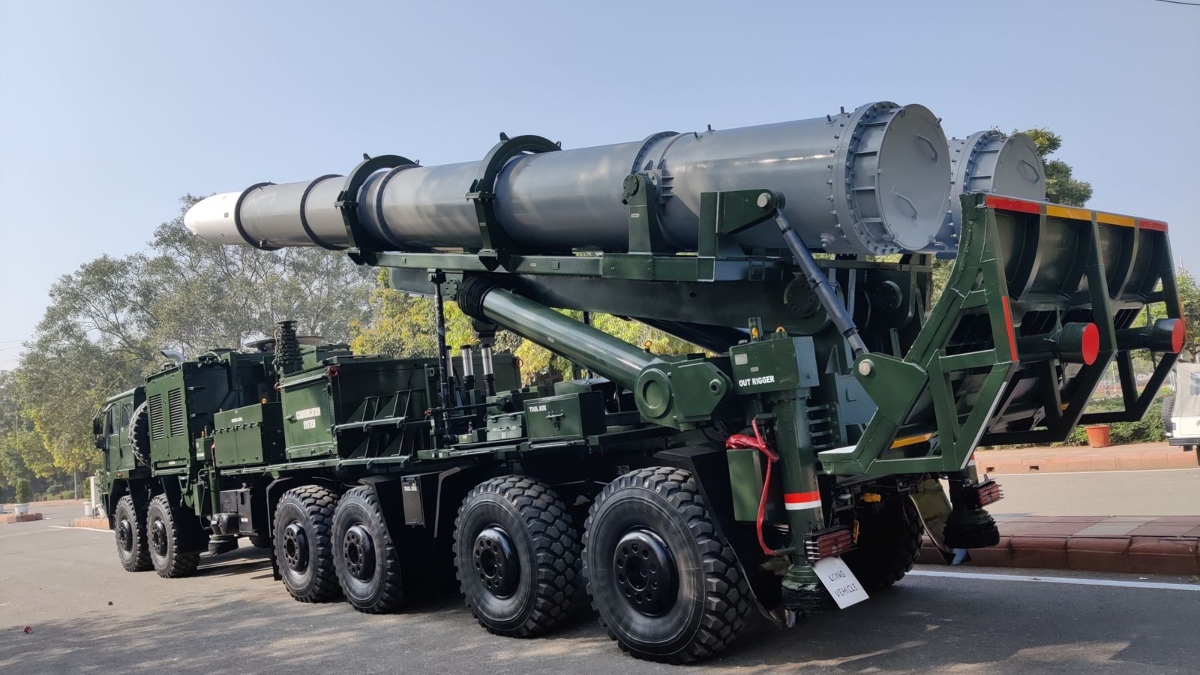SOURCE: RAUNAK KUNDE / NEWS BEAT / IDRW.ORG


The Indian Air Force (IAF), in collaboration with the Defence Research and Development Organisation (DRDO), is venturing into futuristic territory with brainstorming sessions focused on developing a stratospheric airship equipped with advanced infrared detection systems. This ambitious concept aims to detect stealth aircraft from thousands of kilometres away, marking a significant leap in India’s aerial surveillance and defence capabilities.
The initiative aligns with the IAF’s broader vision to transition into a Space Force, a goal underscored by its pursuit of dedicated satellites, High-Altitude Pseudo-Satellites (HAPS), and even India’s reusable launch vehicle (RLV)—often dubbed the country’s own ‘Space Shuttle’—currently under development by the Indian Space Research Organisation (ISRO).
Continue readingSOURCE: AFI


India is rapidly emerging as a competitive player in the global defense manufacturing sector, offering high-quality artillery ammunition and weaponry at a fraction of the cost of Western alternatives. According to two Indian sources, India can produce 155 mm artillery shells for approximately $300 to $400 per unit, a stark contrast to European equivalents, which often retail for upwards of $3,000. This significant price differential underscores India’s growing capability to deliver cost-effective solutions without compromising quality.
In addition to ammunition, Indian firms are making strides in the production of howitzers. One source revealed that Indian-made howitzers are priced at around $3 million each—roughly half the cost of comparable European models. This affordability is attracting attention from nations seeking to bolster their defense capabilities while managing constrained budgets.
Continue readingSOURCE: AFI


The Indian Air Force (IAF) has been actively pursuing the acquisition of 114 multi-role fighter aircraft (MRFA) under a tender to bolster its dwindling squadron strength, currently at 31 against a sanctioned 42. The Dassault Rafale, a 4.5-generation fighter already in service with the IAF, is a leading contender for this contract. However, the financial implications of purchasing 110 additional Rafale F4 jets could significantly strain the IAF’s budget, potentially consuming its capital allocation for years.
This article examines the estimated cost of acquiring 110 Rafale jets, compares it to the IAF’s yearly budget, and calculates how long the capital budget might be tied up, drawing on available data and historical spending patterns.
Continue readingSOURCE: AFI


A recently declassified document labeled “TOP SECRET,” covering the period from 1950 to 1959, offers a revealing glimpse into the geopolitical dynamics between India and China during a critical decade. The report, part of a historical analysis of India’s foreign policy under Prime Minister Jawaharlal Nehru, highlights the strategic missteps and ideological underpinnings that contributed to the deterioration of Sino-Indian relations, culminating in the 1962 border conflict. Titled “Section I (1950-1959) Summary,” the document sheds light on Nehru’s approach to China, his handling of the border dispute, and the broader implications for India’s national security.
The document underscores a significant shift in Chinese military superiority between late 1950 and late 1959, a period marked by Mao Zedong’s consolidation of power and China’s growing assertiveness. During this time, Nehru adopted a policy of “friendship” toward the Chinese Communist regime, hoping to foster peaceful coexistence despite Beijing’s increasing hostility. The report notes that Nehru was “gentle” in his dealings with China, reflecting his belief in non-alignment and his vision of India and China as partners in a post-colonial Asian resurgence, often referred to as the “Hindi-Chini Bhai Bhai” (India-China Brotherhood) era.
Continue readingSOURCE: AFI


The Indian Peace Keeping Force (IPKF) deployment in Sri Lanka from 1987 to 1990 remains one of the most controversial chapters in India’s military and foreign policy history. Often dubbed “India’s Vietnam War” due to its parallels with the United States’ prolonged and bloody conflict in Southeast Asia, the IPKF mission began with noble intentions but descended into a quagmire of violence, diplomatic fallout, and human tragedy. This operation, rooted in the 1987 Indo-Sri Lankan Accord, aimed to bring peace to a war-torn nation but instead left a legacy of loss and lessons for India.
The roots of the IPKF’s involvement lie in the escalating Sri Lankan Civil War, a conflict pitting the Sinhalese-dominated government against Tamil separatist groups, most notably the Liberation Tigers of Tamil Eelam (LTTE). By the mid-1980s, the violence had spilled over Sri Lanka’s borders, with Tamil refugees flooding into India’s Tamil Nadu state, raising domestic political pressures. India, under Prime Minister Rajiv Gandhi, sought to mediate. After years of covert support to Tamil militants by India’s intelligence agencies, Gandhi pivoted to diplomacy, brokering the Indo-Sri Lankan Accord with Sri Lankan President J.R. Jayewardene in July 1987.
Continue readingSOURCE: IDRW.ORG


Nagpur-based JSR Dynamics Pvt. Ltd., a rising star in India’s defense sector, is making waves with its latest innovation—the Miniature Ground Launched Drone-Weaponized (MGLD-W). This 400 kg-class ground-launched missile drone, powered by a 150 kgf turbojet engine, boasts a range of 297 km and a maximum speed of 0.85 Mach, positioning it as a formidable asset for precision strikes.
The MGLD-W is a lightweight, autonomous aerial vehicle designed for operational flexibility in modern combat scenarios. Weighing 400 kg, it is powered by a 150 kgf turbojet engine, enabling sustained thrust for long-range missions. With a range of 297 km, the drone can engage targets far beyond the reach of traditional artillery, offering a strategic advantage in standoff operations. Its maximum speed of 0.85 Mach (approximately 1,050 km/h at sea level) ensures rapid response, making it suitable for time-sensitive missions.
Continue readingSOURCE: IDRW.ORG


The Indian Air Force (IAF) has reached out to private sector companies to develop an advanced Automatic Take-Off and Landing Recording System, aiming to modernize a critical aspect of its operations at air bases across the country. Currently, the IAF manually records all aircraft take-offs and landings using handheld camcorders, a practice essential for post-accident/incident investigations and aircrew training debriefs.
However, this outdated method suffers from sub-optimal coverage, poor resolution, and a complete inability to function at night. By seeking an automated, high-tech solution, the IAF intends to enhance safety, training, and operational oversight—ushering in a leap forward with the help of India’s private industry under the Atmanirbhar Bharat framework.
Continue readingSOURCE: AFI


The Indian Air Force (IAF) faces a critical juncture as over 100 HAL HJT-16 Kiran jet trainers, operational for over five decades, are slated for retirement by 2027. These “Ray of Light” aircraft, introduced in 1968, have been the backbone of Stage-II pilot training for the IAF and Indian Navy, bridging basic training on Pilatus PC-7s to advanced training on BAE Hawks.
With no viable import option available, the indigenously developed HJT-36 Yashas, unveiled at Aero India 2025, is poised to replace the Kirans. However, delays in its induction raise concerns about a potential training gap, as India’s self-reliance ambitions confront the risk of “self-created emergency conditions,” .
Continue readingSOURCE: AFI


In a groundbreaking development for India’s defence sector, the JCBL Group, through its defence arm Airbornics Defence & Space Pvt Ltd (ADSL), has signed India’s first-ever defence Memorandum of Understanding (MoU) with Slovakia. Formalized during President Droupadi Murmu’s state visit to Slovakia in August 2024, this landmark agreement, announced on April 15, 2025, positions JCBL as a key player in co-developing advanced technologies for light tanks, Future Ready Combat Vehicles (FRCVs), and Futuristic Infantry Combat Vehicles (FICVs).
Additionally, the partnership opens the door for JCBL to offer the cutting-edge Eva-M2 6×6 self-propelled howitzer, a globally unique artillery system, for the Indian Army’s Mounted Gun System (MGS) tender.
Continue readingSOURCE: AFI


The Defence Research and Development Organisation (DRDO) of India has embarked on a transformative journey to develop advanced magnetic materials for strategic applications, as outlined in a detailed roadmap presented by its Naval Science and Technological Laboratory (NSTL) in Visakhapatnam. This initiative, spanning short, medium, and long-term goals from 2015 to 2035, aims to bolster India’s self-reliance in defence technologies by creating cutting-edge magnetic materials for motors, sensors, shielding, and future nano-composite devices.
Highlighted in a graphic shared on X in April 2025, DRDO’s efforts underscore a strategic push to reduce dependency on rare earth elements, enhance electromagnetic performance, and pave the way for next-generation defence systems. This article explores DRDO’s roadmap, its implications for India’s military aviation and naval sectors, and the challenges ahead.
Continue readingSOURCE: AFI


In the global race for air superiority, Russia has often been a formidable contender, with its storied design bureaus like MiG and Sukhoi shaping aviation history. While the world’s attention today fixates on the United States’ Next Generation Air Dominance (NGAD), China’s tailless prototypes, and Europe’s collaborative Tempest and FCAS programs, a lesser-known chapter in Russia’s aerospace saga deserves a spotlight. Years ago, Russia’s Mikoyan-Gurevich (MiG) design bureau unveiled a bold 6th-generation fighter concept—a sleek, blended wing body (BWB) design with no vertical tails, featuring 2D thrust vector control (TVC) and a radar cross-section (RCS) test model.
This audacious vision, which briefly positioned Russia ahead of its peers, has since faded into obscurity, starved of funding and overshadowed by other priorities. Could renewed investment revive MiG’s dormant dream and restore Russia’s edge in next-generation air combat?
Continue readingSOURCE: AFI


Recent satellite imagery from INS Rajali, the Indian Navy’s premier naval air station in Arakkonam, Tamil Nadu, has revealed a poignant sight: the decommissioned Tupolev Tu-142M long-range maritime patrol aircraft, once the backbone of India’s anti-submarine warfare capabilities, parked in a forest clearing far from the main runway. This positioning, away from active operational areas or public display zones, suggests that the Navy has no immediate plans to relocate these iconic giants to museums, parks, or other visitor-accessible sites, leaving their future uncertain.
The Tu-142M, affectionately nicknamed the “Albatross,” served the Indian Navy for 29 years, from 1988 to 2017, logging an impressive 30,000 accident-free flying hours. Inducted into the Indian Naval Air Squadron (INAS) 312 at INS Hansa, Goa, and later based at INS Rajali from 1992, the Soviet-era aircraft were renowned for their long-range maritime reconnaissance and anti-submarine warfare capabilities. With a 50-meter wingspan, a combat radius of 6,500 km, and a top speed of 850 kmph, the Tu-142M was the world’s fastest turboprop aircraft, earning a fearsome reputation in operations like Operation Cactus in the Maldives (1988), Op Vijay (1998), Op Parakram (2002), and anti-piracy missions from 2011 onward.
Continue readingSOURCE: RAUNAK KUNDE / NEWS BEAT / IDRW.ORG


Hindustan Aeronautics Limited (HAL), India’s state-owned aerospace giant, is set to deepen private sector involvement in its latest ?650 billion ($7.8 billion) tender for 97 Light Combat Aircraft (LCA) Tejas Mk1A fighters, following the Defence Acquisition Council’s approval on November 30, 2023. This move, aimed at addressing production delays and meeting the Indian Air Force’s (IAF) urgent needs, marks HAL’s second major Tejas contract after a $6.5 billion deal in January 2021 for 83 aircraft.
With production lines in Bangalore and Nashik gearing up to deliver 24 LCAs annually by 2025–2026, HAL’s outsourcing strategy, as revealed by sources to idrw.org, promises to revolutionize assembly timelines and bolster India’s indigenous defence capabilities under the “Make in India” initiative.
Continue readingSOURCE: RAUNAK KUNDE / NEWS BEAT / IDRW.ORG


After months of diplomatic and strategic discussions, India is reportedly on the verge of approving a request from Armenia for the supply of the Pralay surface-to-surface tactical ballistic missile (BM). Sources indicate that the deal, which has been under negotiation for some time, could be finalized in the coming weeks, marking a significant step in the growing defence cooperation between the two nations.
The Pralay missile, developed by India’s Defence Research and Development Organisation (DRDO), is a cutting-edge weapon system designed for precision strikes against high-value targets. With its quasi-ballistic trajectory and advanced guidance systems, the missile can evade enemy air defences, making it a potent addition to any military arsenal. However, due to India’s commitments as a member of the Missile Technology Control Regime (MTCR), the version of the Pralay missile to be supplied to Armenia will have a capped range of 290 kilometres.
Continue readingSOURCE: RAUNAK KUNDE / NEWS BEAT / IDRW.ORG


In a significant development for India’s naval ambitions, Mazagon Dock Shipbuilders Limited (MDL), the country’s premier submarine manufacturer, is independently designing a conventional diesel-electric submarine to rival a similar effort by the Defence Research and Development Organisation (DRDO).
An MDL official, speaking to idrw.org on March 18, 2025, revealed that the company’s in-house team is crafting a bespoke design to compete with DRDO’s proposal under Project-76. This dual-track approach could offer the Indian Navy two distinct indigenous options, enhancing flexibility and innovation in its quest for a next-generation underwater fleet.
Continue reading